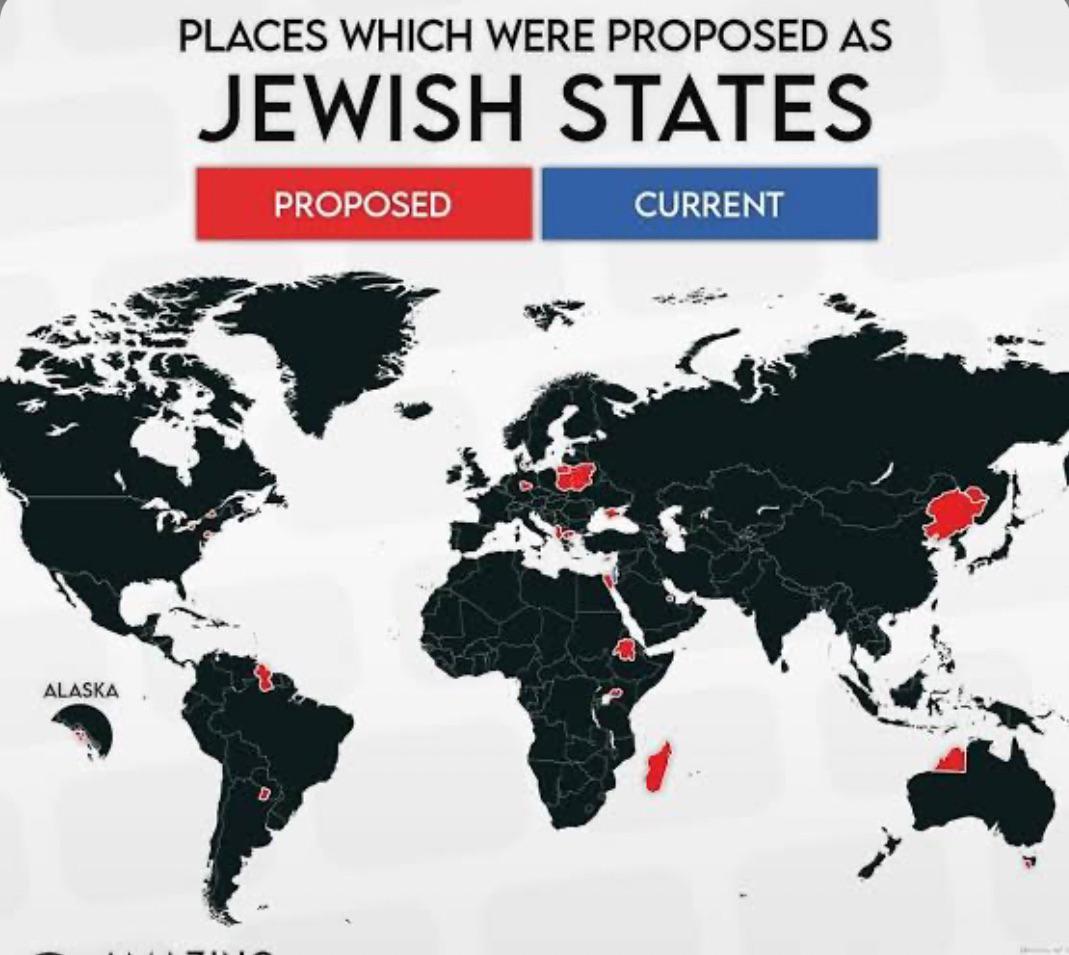Map of Locations Proposed for Israel


Marcus Rodriguez
Historical Geography Expert
Marcus Rodriguez specializes in historical cartography and geographic data analysis. With a background in both history and geography, he brings unique...
Geographic Analysis
What This Map Shows
This map visualizes various locations that have been proposed as potential sites for the establishment of the State of Israel. It provides a unique perspective on the historical, political, and geographical discussions surrounding the founding of Israel, illustrating the complexity of territorial claims and aspirations throughout the years. The locations span across different regions and highlight various proposals that emerged in different contexts, showcasing the diverse narratives that shaped the nation’s history.
Deep Dive into Proposed Locations for Israel
The establishment of Israel in 1948 was the culmination of a long history of aspirations, negotiations, and conflicts over land. Various proposals for the location of a Jewish homeland emerged over centuries, each influenced by historical, political, and social factors. Notably, the Balfour Declaration of 1917 and the subsequent British Mandate for Palestine set the stage for these discussions.
One of the most significant proposals was the territory encompassing parts of modern-day Palestine, which included regions in both the West Bank and Gaza Strip. However, other locations were also considered. For instance, the Uganda Scheme proposed by the British in 1903 suggested a portion of East Africa as a potential homeland. Interestingly, this proposal was met with resistance from many Zionist leaders who felt that a Jewish state should be established in the historical land of Israel.
Additionally, during the 1930s and 1940s, various partition plans were presented, most notably the United Nations Partition Plan for Palestine in 1947. This plan suggested dividing the land into separate Jewish and Arab states, which sparked significant debate and conflict. Each of these proposals carried with them the weight of historical claims, cultural significance, and the realities of existing populations.
What’s fascinating is that the proposed locations were not just limited to the immediate region; discussions even included areas in the Americas and other parts of the world. This reflects the global dimensions of the Jewish diaspora and the quest for a safe haven for Jews after centuries of persecution. However, the actual establishment of Israel occurred in the context of the ongoing conflict with Arab nations and the local Palestinian population, complicating the narrative further.
Regional Analysis
When analyzing the proposed locations for Israel, it’s essential to consider the varying historical contexts and implications for different regions. For instance, the land traditionally known as Judea and Samaria (the West Bank) was a focal point of many proposals, as it holds significant historical and religious importance for Jews. The demographic distribution in this region has been contentious, with both Jewish and Arab populations laying claim to the land.
On the other hand, the Gaza Strip, while smaller, also played a crucial role in the discussions about the future of a Jewish state. The geographic proximity to Egypt and the Mediterranean Sea adds layers of complexity to the region's strategic importance. Interestingly, proposals regarding the Gaza area often highlighted the challenges of governance and security that would arise from creating a viable state in such a densely populated and contested region.
In summary, while many proposed locations revolved around what is now Israel, different areas presented unique challenges and opportunities, shaped by their geography, demographic realities, and historical narratives. The complexity of these discussions illustrates the deep connections individuals and communities have to land, further complicating the already intricate political landscape.
Significance and Impact
The significance of understanding the proposed locations for Israel lies in recognizing the broader implications of territorial claims and national identities. The establishment of Israel did not occur in a vacuum; it was influenced by centuries of Jewish history, the impact of World War II, and the global political climate of the time. Today, the ongoing Israeli-Palestinian conflict is a direct consequence of these historical proposals and the resulting territorial disputes.
Moreover, as we look to the future, the discussions surrounding land and sovereignty continue. Current trends indicate that the quest for peace and resolution in the region remains fraught with challenges. Understanding the historical proposals can provide valuable insight into the motivations and fears that shape current narratives and policy decisions.
In conclusion, the map of locations proposed for Israel is not merely a historical artifact; it represents the aspirations, conflicts, and complexities of a region that continues to be of paramount importance in global geopolitics. As we reflect on these proposals, we are reminded of the intricate dance between geography, history, and human aspirations, shaping the world we live in today.
Visualization Details
- Published
- October 27, 2025
- Views
- 14
Comments
Loading comments...